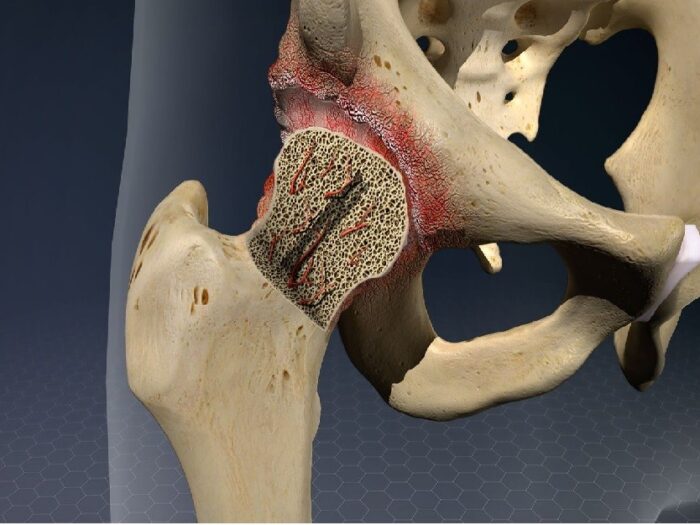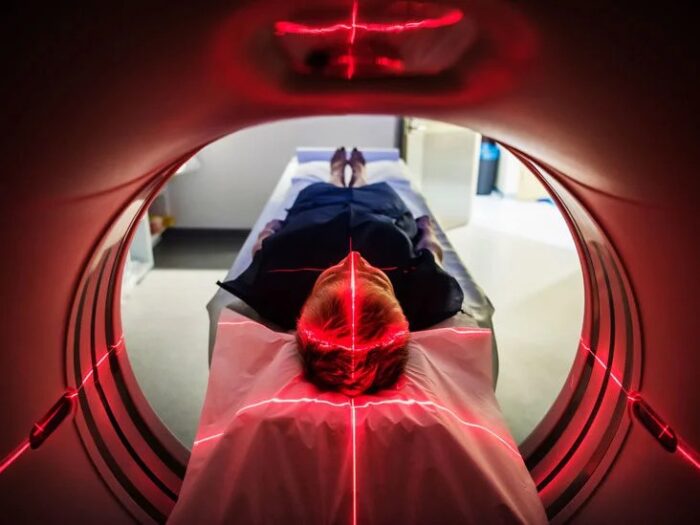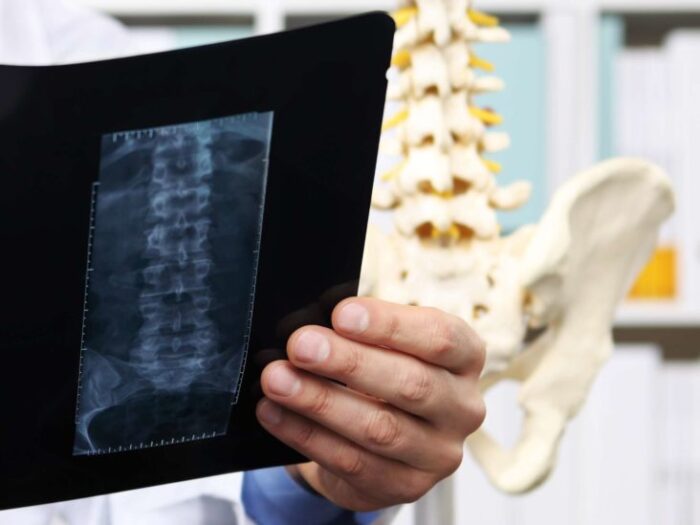Avascular necrosis (AVN) is a medical condition that results in the death of bone tissue due to a lack of blood supply. It can cause severe pain and disability, and may even lead to long-term complications if not treated promptly and properly. This condition most commonly affects the bones in the hips, but it can also affect other joints such as those in the shoulders, knees, and ankles. While there are certain risk factors for developing AVN such as alcohol use disorder or steroid use, this disease can also occur spontaneously without any known cause. With early diagnosis and treatment, however, there is potential for slowing or halting AVN progression.
Table of Contents
Causes of Avascular Necrosis

Avascular necrosis (AVN) is a condition where the bones start to die due to a lack of blood supply. It is a serious and potentially disabling condition that affects the joints, particularly those in the hips, shoulders, and knees. The exact cause of avascular necrosis can vary but there are three primary factors associated with this disorder: trauma, medical conditions and medications.
- Trauma: Trauma caused by injury or surgery can damage the blood vessels around bones resulting in decreased blood flow and leading to necrosis (bone death). Examples of trauma associated with AVN include fractures or dislocations, excessive pressure on a joint from prolonged immobility such as sitting for long periods, or sudden changes in joint position from certain surgical procedures.
- Medical Conditions: Certain medical conditions can interfere with normal circulation causing decreased blood flow to the bones which can lead to necrosis. Conditions like sickle cell anemia, thalassemia, and Gaucher’s disease are all known to increase the risk for the development of avascular necrosis. Additionally, people who have had radiation therapy as part of cancer treatments may also be at risk for developing this condition later down the line due to compromised circulatory pathways caused by the treatment itself.
Symptoms of Avascular Necrosis
Avascular necrosis (AVN), also known as osteonecrosis, is a medical condition in which poor blood supply to the bone leads to bone death. It can cause severe pain and joint instability, and if left untreated can lead to disability due to joint destruction. The exact cause of AVN is unknown but it may be linked to certain medical conditions or medications that reduce blood flow.
The most common symptom of AVN is joint pain that is worse when bearing weight on the affected limb. This type of pain typically occurs gradually and worsens over time as the disease progresses. Other symptoms include swelling around the affected area, decreased range of motion in the joints, stiffness after periods of rest, and audible grinding noise when moving the affected limb. Some patients may also experience numbness or tingling in their arms or legs due to nerve compression caused by AVN-related bone collapse.
Diagnosis for avascular necrosis typically involves imaging studies such as magnetic resonance imaging (MRI) or computed tomography (CT) scans which can determine if there has been any cell death in the bones involved with AVN.
Diagnosis of Avascular Necrosis

Avascular necrosis, also known as osteonecrosis or ischemic bone necrosis, is a serious medical condition where there is a loss of blood supply to an area of the bone. This leads to cell death and eventual destruction of the affected bones. Diagnosis of avascular necrosis can be difficult because it does not always show up on traditional X-rays, and symptoms may not appear until extensive damage has already occurred. In this article, we will discuss the various methods used for diagnosing avascular necrosis.
The first step in diagnosing avascular necrosis is for your doctor to review your medical history and perform a physical examination. Your doctor may ask you questions about your lifestyle, such as whether you are a smoker or drink alcohol heavily since these factors could increase your risk for developing avascular necrosis. Your doctor will also look at any joint pain or swelling you have experienced to determine if there could be an underlying cause other than just poor circulation of blood in the area.
The next step in diagnosis involves imaging tests such as X-rays, magnetic resonance imaging (MRI), or computed tomography (CT) scans.
Treatment for Avascular Necrosis
Avascular necrosis (AVN), also known as osteonecrosis, is a condition that results in bone death due to a lack of blood supply to the bones. It can occur in any joint but most commonly affects the hip, knee, shoulder, and ankle joints. Treatment for AVN depends on the severity of the condition and may include medications, physical therapy exercises, or surgery.
Medications are often used to help reduce pain associated with avascular necrosis. Nonsteroidal anti-inflammatory drugs (NSAIDs) such as ibuprofen are usually prescribed for mild cases of AVN. Corticosteroids can be injected into the affected area to reduce inflammation and swelling. In more severe cases of AVN, medications such as bisphosphonates may be prescribed to strengthen weakened bones or inhibit further bone loss.
Physical therapy exercises can help restore the range of motion and strength in an affected joint while relieving pain associated with avascular necrosis. Exercise programs typically focus on stretching muscle groups around an affected joint and strengthening weak muscles that support it if necessary.
Prevention of Avascular Necrosis

Avascular necrosis (AVN) is a condition in which the bones of the body do not receive enough blood supply, leading to bone death. This can be a painful and debilitating condition and can lead to severe disability if left untreated. Fortunately, there are steps that people can take to reduce their risk of developing this condition and possibly even prevent it from occurring in the first place.
The most important step in preventing AVN is proper management of any medical conditions or diseases that may put one at risk for developing AVN. Those who have diabetes, lupus, sickle-cell anemia, gout, or rheumatoid arthritis are more likely to develop AVN than those without these conditions. Therefore, it is essential for those with these illnesses to maintain optimal health by controlling their illness through diet and exercise as well as taking prescribed medications regularly.
Alcohol consumption should be limited or avoided altogether by those at risk for AVN since alcohol affects how blood flows throughout the body and can lead to decreased oxygen levels in bone tissue.
Conclusion
Avascular necrosis is a serious medical condition that can lead to debilitating joint pain, bone loss, and ultimately, the need for joint replacement surgery. Although there is no cure for avascular necrosis, early diagnosis, and aggressive treatment can help minimize symptoms and prevent further damage to the affected bones. Additionally, lifestyle changes such as quitting smoking or reducing alcohol consumption may help prevent avascular necrosis from occurring or progressing. With the right approach to treatment and lifestyle modifications, those affected by this condition can improve their quality of life and reduce their risk of developing more serious complications down the line.

